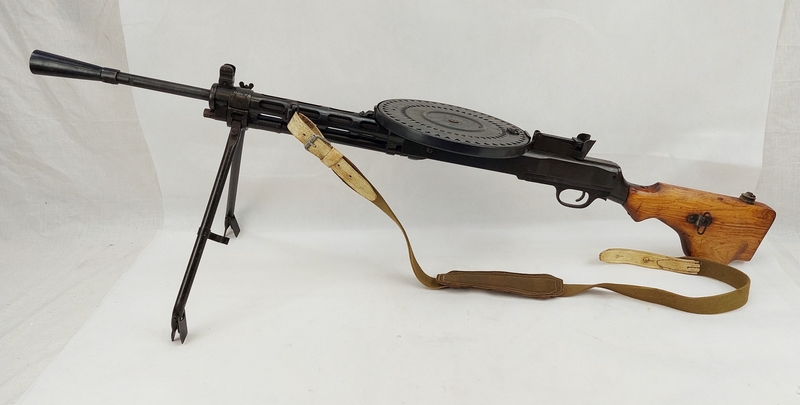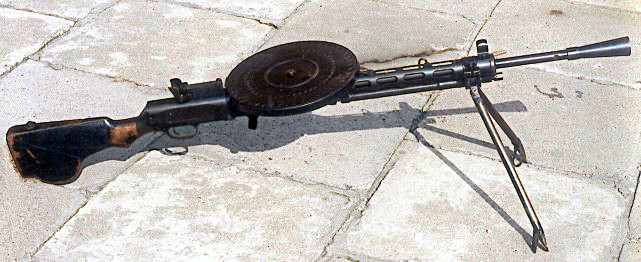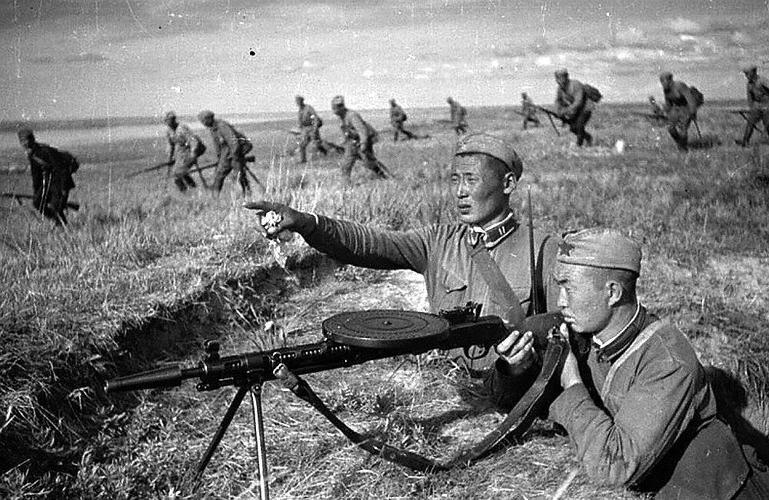DP-28
| Factions | Weapon | Icon | Classes | Ammo |
|---|---|---|---|---|
 VC |
 DP-28 |
 |
47 / 96 |
| Damage Base | Headshot × | Chest × | Stomach × | Leg × | Arm × | Bayonet | Rifle Grenades | Reload Speed | |
|---|---|---|---|---|---|---|---|---|---|
| Partial | Empty | ||||||||
| 43 | ×2.4 = 103.2 | ×1.3 = 55.9 | ×1.25 = 53.75 | ×0.8 = 34.4 | ×0.75 = 32.25 | NO | NO | 3.66 Seconds | 4.5 Seconds |
| Designation | Weapon Type | Fire Modes | Fire Rate | Bullet Spread ° | Bipod Bullet Spread ° | Range Modifier | Muzzle Velocity | Projectile weight | Weight |
|---|---|---|---|---|---|---|---|---|---|
| DP-27 | LMG | Auto | 550 RPM | 9.87° & 2.35° ADS | 2.58° & 0.67° ADS | 0.925 | 800 m/s | 9 g (138.891 gr) | 9.12 kg (20.11 lbs) |
| Full name | Caliber | Place of Origin | Date | Manufacturer | Barrel Length | Total Length | Weapon Script Name |
|---|---|---|---|---|---|---|---|
| 7,62-мм ручной пулемет обр | 7.62x54mm | Soviet Union | 1928 | Many | 23.8 in (604 mm) | 50.0 in (1,270 mm) | weapon_dp28 |
The DP-28 (Sometimes referred to as the DP-27, same gun) is a light machine gun firing the 7.62×54mmR cartridge that was primarily used by the Soviet Union, with service trials starting in 1927, followed by general deployment in 1928. It was improved in 1943 producing the DPM, but it was replaced in 1946 with the RP-46 which improved on the basic DP design by converting it to use belt feed. The DP machine gun was supplemented in the 1950s by the more modern RPD machine gun and entirely replaced in Soviet service by the general purpose PK machine gun in the 1960s.
The DP-27 is a light machine gun designed for the Soviet Red Army in the 1920s under the leadership of Vasily Degtyaryov (1880–1949), the first test model being the DP-26. Two test guns were manufactured and fired 5,000 rounds each from September 27–29, 1926, during which weaknesses were discovered in the extractor and firing pin mechanisms. After design improvements, two more guns were made and tested in December 1926, firing 40,000 rounds under adverse conditions, resulting in only .6% stoppages. However, changes to the bolt carrier and the chamber locking mechanism were still required. After this redesign the improved gun, now called the DP-27, was tested by the Red Army at the Kovrov plant on January 17–21 of 1927, passing all tests and being approved for manufacture. A full year of service testing followed, after which the primary requested change was the addition of the large flash suppressor that is now considered one of the recognition features of the design. With further refinements, the DP was to be the primary light machine gun of the Red Army during WWII.
The DP-27 was designed to fire the same 7.62×54mmR (R indicating rimmed) ammunition as the main Soviet infantry rifle, the Mosin-Nagant, much simplifying ammunition logistics for Soviet infantry units. Of typical Russian design philosophy, the DP-27 was a sturdy and simple gun that was easy and cheap to manufacture, and could be relied upon to perform even in the most adverse conditions; it was capable of withstanding being buried in dirt, mud, or sand and still operating consistently. However, being magazine fed, it had a rate of fire similar to other light machine guns, like the Bren light machine gun, but low when compared to its main wartime rivals, the German MG 34/MG 42 series, firing at a rate of 550rpm as compared to the 800-1,500rpm of the German general-purpose machine guns.
The design had weaknesses that would eventually be addressed in later variants. The pan magazines were prone to damage, while also being difficult and time-consuming to reload. The bipod mechanism was weak and likely to fail if not handled with care. Replacing the barrel was not a quick operation due to a lack of handle and the amount of disassembly needed, though a well trained crew could do so in 30 seconds under ideal conditions. The open gas chamber and bolt frame could accumulate dust in sandy conditions, clogging the gas piston. The recoil spring's location near the barrel led to overheating, causing it to lose proper spring temper.
Examples of all variants of the DP machine gun were given or sold to the Viet Minh in the First Indochina War by the USSR and Chinese Communists. Similarly, in the Vietnam War to the NVA and Vietcong.
SOURCE



